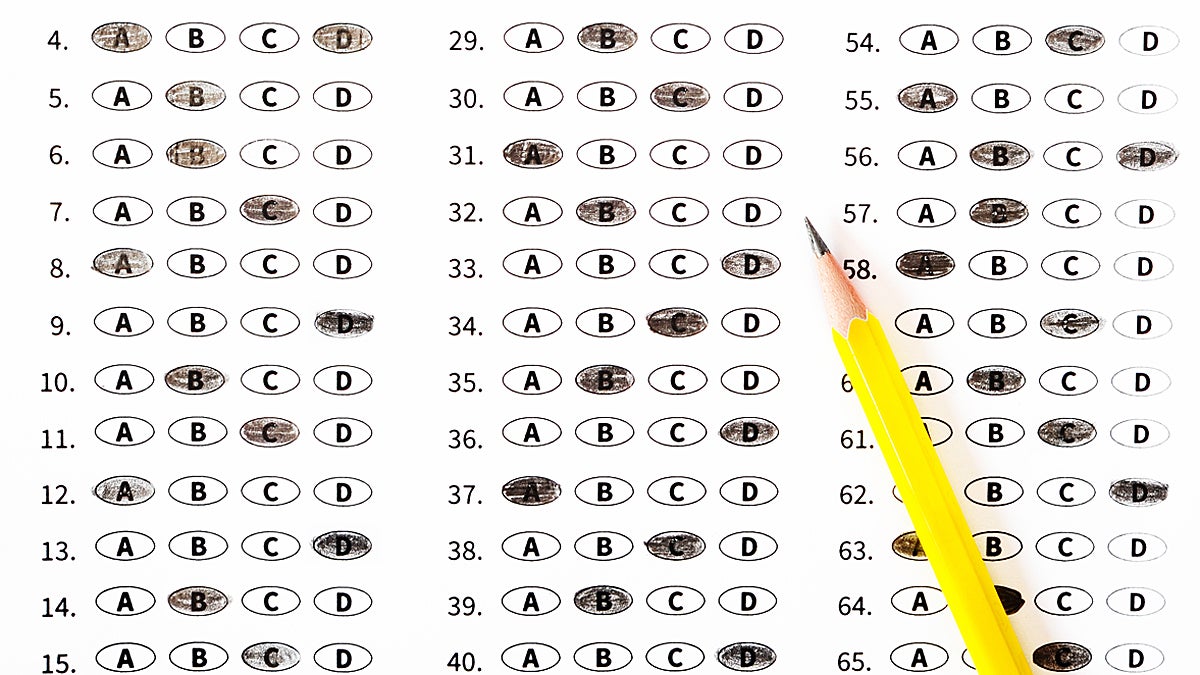New analysis questions validity of Pa.’s School Performance Profile rating
 Photo via ShutterStock) " title="ssstandardizedtestx1200" width="1" height="1"/>
Photo via ShutterStock) " title="ssstandardizedtestx1200" width="1" height="1"/>
(Photo via ShutterStock)
Everyone wants to know how schools are doing — parents, teachers, taxpayers. School performance is followed closely, but the individual measures used to rank schools may not be that well understood.
New analysis shows the metrics used may actually measure poverty rather than academic performance.
Research for Action, a nonprofit organization focusing on educational issues, released the analysis on the School Performance Profile, the way Pennsylvania measures the academic performance of every public and charter school in the state.
Although multiple indicators are considered, the organization found that 90 percent rely on test scores.
Several studies already raise the question of whether standardized test scores measure student achievement or poverty.
Adopted in 2013, the School Performance Profile replaced Adequate Yearly Progress reports.
“Our analysis calls into question whether or not the School Performance Profile is actually a valid measure of the quality of a school or whether it’s simply a reflection of the level of poverty that exists in a school,” said Kate Shaw, executive director of Research for Action.
The stakes are high since the SPP is used to evaluate teacher effectiveness, whether schools are making adequate progress and whether to reauthorize cyber-charter schools.
The SPP uses a scale of zero to 100, and scores of 70 or above are considered satisfactory.
Impoverished schools and their SPP seem to be correlated.
“So, in other words, the higher the level of poverty in the school, the lower the level of performance on the SPP,” Shaw said.
She says one metric — the “value-added measure” — is actually supposed to account for poverty and other out-of-school factors.
“In the case of Pennsylvania’s value added measure, we found, once again, that there’s a high correlation with the amount of poverty that exists in the school,” she said,
Title I schools, those that serve large populations of disadvantaged students, and high-poverty schools face particular challenges because schools with lower test scores are required to make more progress and may face strict accountability if they fall short.
Pennsylvania’a acting Education Secretary Pedro Rivera has said that he’ll re-evaluate the School Performance Profile.
WHYY is your source for fact-based, in-depth journalism and information. As a nonprofit organization, we rely on financial support from readers like you. Please give today.




